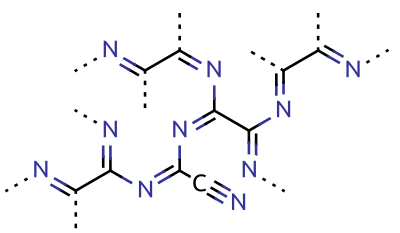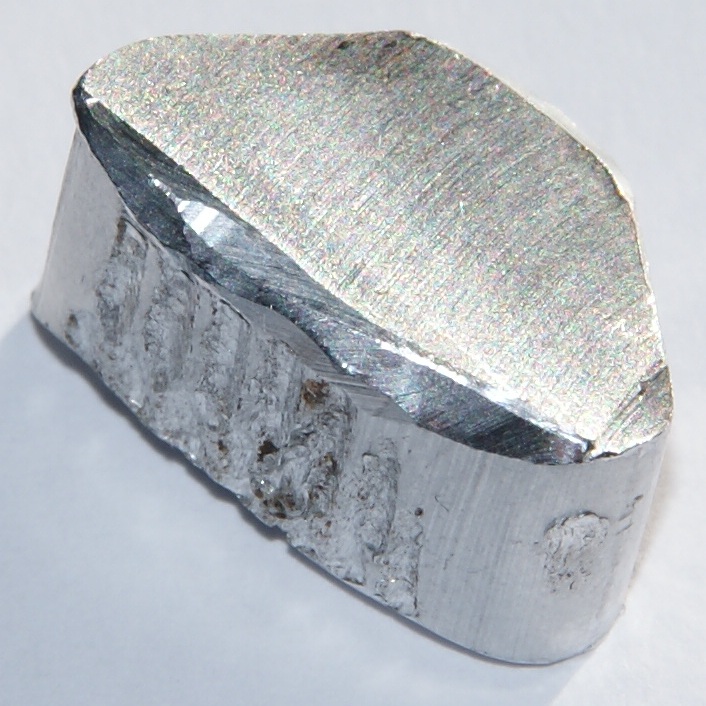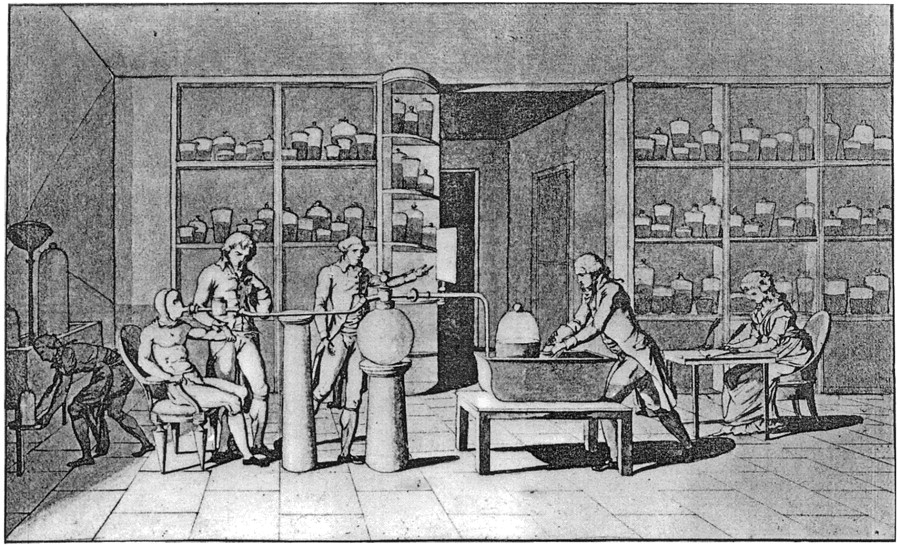|
Oxalic Acid
Oxalic acid is an organic acid with the systematic name ethanedioic acid and chemical formula , also written as or or . It is the simplest dicarboxylic acid. It is a white crystalline solid that forms a colorless solution in water. Its name is derived from early investigators who isolated oxalic acid from flowering plants of the genus '' Oxalis'', commonly known as wood-sorrels. It occurs naturally in many foods. Excessive ingestion of oxalic acid or prolonged skin contact can be dangerous. Oxalic acid is a much stronger acid than acetic acid. It is a reducing agent and its conjugate bases hydrogen oxalate () and oxalate () are chelating agents for metal cations. It is used as a cleaning agent, especially for the removal of rust, because it forms a water-soluble ferric iron complex, the ferrioxalate ion. Oxalic acid typically occurs as the dihydrate with the formula . History The preparation of salts of oxalic acid from plants had been known since at least 1745, when ... [...More Info...] [...Related Items...] OR: [Wikipedia] [Google] [Baidu] |
Royal Society Of Chemistry
The Royal Society of Chemistry (RSC) is a learned society and professional association in the United Kingdom with the goal of "advancing the chemistry, chemical sciences". It was formed in 1980 from the amalgamation of the Chemical Society, the Royal Institute of Chemistry, the Faraday Society, and the Society for Analytical Chemistry with a new Royal Charter and the dual role of learned society and professional body. At its inception, the Society had a combined membership of 49,000 in the world. The headquarters of the Society are at Burlington House, Piccadilly, London. It also has offices in Thomas Graham House in Cambridge (named after Thomas Graham (chemist), Thomas Graham, the first president of the Chemical Society) where ''RSC Publishing'' is based. The Society has offices in the United States, on the campuses of The University of Pennsylvania and Drexel University, at the University City Science Center in Philadelphia, Pennsylvania, in both Beijing and Shanghai, People' ... [...More Info...] [...Related Items...] OR: [Wikipedia] [Google] [Baidu] |
Rust
Rust is an iron oxide, a usually reddish-brown oxide formed by the reaction of iron and oxygen in the catalytic presence of water or air moisture. Rust consists of hydrous iron(III) oxides (Fe2O3·nH2O) and iron(III) oxide-hydroxide (FeO(OH), Fe(OH)3), and is typically associated with the corrosion of refined iron. Given sufficient time, any iron mass, in the presence of water and oxygen, could eventually convert entirely to rust. Surface rust is commonly flaky and friable, and provides no passivational protection to the underlying iron unlike other metals such as aluminum, copper, and tin which form stable oxide layers. ''Rusting'' is the common term for corrosion of elemental iron and its alloys such as steel. Many other metals undergo similar corrosion, but the resulting oxides are not commonly called "rust". Several forms of rust are distinguishable both visually and by spectroscopy, and form under different circumstances. Other forms of rust include the result of r ... [...More Info...] [...Related Items...] OR: [Wikipedia] [Google] [Baidu] |
Natural Product
A natural product is a natural compound or substance produced by a living organism—that is, found in nature. In the broadest sense, natural products include any substance produced by life. Natural products can also be prepared by chemical synthesis (both semisynthesis and total synthesis and have played a central role in the development of the field of organic chemistry by providing challenging synthetic targets). The term ''natural product'' has also been extended for commercial purposes to refer to cosmetics, dietary supplements, and foods produced from natural sources without added artificial ingredients. Within the field of organic chemistry, the definition of natural products is usually restricted to organic compounds isolated from natural sources that are produced by the pathways of primary or secondary metabolism. Within the field of medicinal chemistry, the definition is often further restricted to secondary metabolites. Secondary metabolites (or specialized meta ... [...More Info...] [...Related Items...] OR: [Wikipedia] [Google] [Baidu] |
Cyanogen
Cyanogen is the chemical compound with the chemical formula, formula . Its structure is . The simplest stable carbon nitride, it is a Transparency and translucency, colorless and highly toxic gas with a pungency, pungent odor. The molecule is a pseudohalogen. Cyanogen molecules are linear molecular geometry, linear, and consist of two CN groups ‒ analogous to diatomic halogen molecules, such as chlorine, Cl, but far less oxidizing. The two cyanide, cyano groups are bonded together at their carbon atoms, though other isomers have been detected. The name is also used for the CN radical, and hence is used for compounds such as cyanogen bromide () (but see also ''Cyano radical''). When burned at increased pressure with oxygen, it is possible to get a blue tinted flame, the temperature of which is about 4800°C (a higher temperature is possible with ozone). It is as such regarded as the gas with the second highest temperature of burning (after dicyanoacetylene). Cyanogen is the anhy ... [...More Info...] [...Related Items...] OR: [Wikipedia] [Google] [Baidu] |
Friedrich Wöhler
Friedrich Wöhler Royal Society of London, FRS(For) HonFRSE (; 31 July 180023 September 1882) was a German chemist known for his work in both organic chemistry, organic and inorganic chemistry, being the first to isolate the chemical elements beryllium and yttrium in pure metallic form. He was the first to prepare several inorganic compounds, including silane and silicon nitride. Wöhler is also known for seminal contributions in organic chemistry, in particular, the Wöhler synthesis of urea. His synthesis of the organic compound urea in the laboratory from inorganic substances contradicted the belief that organic compounds could only be produced by living organisms due to a "life force". However, the exact extent of Wöhler's role in diminishing the belief in vitalism is considered by some to be questionable. Biography Friedrich Wöhler was born in Eschersheim, Germany, and was the son of a veterinarian. As a boy, he showed interest in mineral collecting, drawing, and science. ... [...More Info...] [...Related Items...] OR: [Wikipedia] [Google] [Baidu] |
Lavoisier
Antoine-Laurent de Lavoisier ( ; ; 26 August 17438 May 1794), CNRS () also Antoine Lavoisier after the French Revolution, was a French nobleman and who was central to the 18th-century |
Louis-Bernard Guyton De Morveau
Louis-Bernard Guyton, Baron de Morveau (also Louis-Bernard Guyton-Morveau after the French Revolution; 4 January 1737 – 2 January 1816) was a French chemist, politician, and aeronaut. He is credited with producing the first systematic method of chemical nomenclature. Early career Guyton de Morveau was born in Dijon, where he served as a lawyer, then '' avocat général'', of the Dijon ''parlement''. In 1773, already interested in chemistry, he proposed use of "muriatic acid gas" for fumigation of buildings and as a result is sometimes given credit for having suggested chlorine in this use. However, chlorine was not well characterized at that time, and hydrogen chloride (made by reacting sodium chloride and sulfuric acid) was actually the active gaseous fumigation agent. He was criticized by Jean Pierre Chardenon who told him that he should rest in his literary achievements and stay way from chemistry. This challenge led to his resigning his post in 1782 to dedicate himself ... [...More Info...] [...Related Items...] OR: [Wikipedia] [Google] [Baidu] |
Chemical Nomenclature
Chemical nomenclature is a set of rules to generate systematic name#In chemistry, systematic names for chemical compounds. The nomenclature used most frequently worldwide is the one created and developed by the International Union of Pure and Applied Chemistry (IUPAC). IUPAC Nomenclature ensures that each compound (and its various isomers) have only one formally accepted name known as the systematic IUPAC name. However, some compounds may have alternative names that are also accepted, known as the preferred IUPAC name which is generally taken from the common name (chemistry), common name of that compound. Preferably, the name should also represent the structure or chemistry of a compound. For example, the main constituent of vinegar, white vinegar is , which is commonly called acetic acid and is also its recommended IUPAC name, but its formal, systematic IUPAC name is ethanoic acid. The IUPAC's rules for naming organic compound, organic and inorganic compounds are contained in two ... [...More Info...] [...Related Items...] OR: [Wikipedia] [Google] [Baidu] |
Nitric Acid
Nitric acid is an inorganic compound with the formula . It is a highly corrosive mineral acid. The compound is colorless, but samples tend to acquire a yellow cast over time due to decomposition into nitrogen oxide, oxides of nitrogen. Most commercially available nitric acid has a concentration of 68% in water. When the solution contains more than 86% , it is referred to as ''fuming nitric acid''. Depending on the amount of nitrogen dioxide present, fuming nitric acid is further characterized as red fuming nitric acid at concentrations above 86%, or white fuming nitric acid at concentrations above 95%. Nitric acid is the primary reagent used for nitration – the addition of a nitro group, typically to an organic molecule. While some resulting nitro compounds are shock- and thermally-sensitive explosives, a few are stable enough to be used in munitions and demolition, while others are still more stable and used as synthetic dyes and medicines (e.g. metronidazole). Nitric acid is ... [...More Info...] [...Related Items...] OR: [Wikipedia] [Google] [Baidu] |
Torbern Bergman
Torbern Olof Bergman (''KVO'') (20 March 17358 July 1784) was a Swedish chemist and mineralogist noted for his 1775 ''Dissertation on Elective Attractions'', containing the largest chemical affinity tables ever published. Bergman was the first chemist to use the A, B, C, etc., system of notation for chemical species. Early life and education Torbern was born on 20 March 1735, the son of Barthold Bergman and Sara Hägg. He enrolled at the University of Uppsala at age 17. His father wished him to read either law or divinity, while he himself was anxious to study mathematics and natural science; in the effort to please both himself and his father, he overworked himself and harmed his health. During a period of enforced abstinence from study, he amused himself with field botany and entomology. He was able to send Linnaeus specimens of several new kinds of insects, and in 1756 he succeeded in proving that, contrary to the opinion of that naturalist, the so-called ''Coccus aquaticus'' ... [...More Info...] [...Related Items...] OR: [Wikipedia] [Google] [Baidu] |
Carl Wilhelm Scheele
Carl Wilhelm Scheele (, ; 9 December 1742 – 21 May 1786) was a Swedish Pomerania, German-Swedish pharmaceutical chemist. Scheele discovered oxygen (although Joseph Priestley published his findings first), and identified the elements molybdenum, tungsten, barium, nitrogen, and chlorine, among others. Scheele discovered organic acids Tartaric acid, tartaric, Oxalic acid, oxalic, Uric acid, uric, Lactic acid, lactic, and Citric acid, citric, as well as Hydrofluoric acid, hydrofluoric, Hydrocyanic acid, hydrocyanic, and Arsenic acid, arsenic acids. He preferred speaking German to Swedish his whole life, as German was commonly spoken among Swedish pharmacists.Fors, Hjalmar 2008. "Stepping through Science’s Door: C. W. Scheele, from Pharmacist's Apprentice to Man of Science". Ambix 55: 29–49 Biography Scheele was born in Stralsund, in western Pomerania, which at the time was a Dominions of Sweden, Swedish Dominion inside the Holy Roman Empire. Scheele's father, Joachim (or Jo ... [...More Info...] [...Related Items...] OR: [Wikipedia] [Google] [Baidu] |
Kraft Process
The kraft process (also known as kraft pulping or sulfate process) is a process for conversion of wood into wood pulp, which consists of almost pure cellulose fibres, the main component of paper. The kraft process involves treatment of wood chips with a hot mixture of water, sodium hydroxide (NaOH), and sodium sulfide (Na2S), known as white liquor, that breaks the bonds that link lignin, hemicellulose, and cellulose. The technology entails several steps, both mechanical and chemical. It is the dominant method for producing paper. In some situations, the process has been controversial because kraft plants can release odorous products and in some situations produce substantial liquid wastes. The process name is derived from the German word ''wikt:Kraft#German, Kraft'', meaning "strength" in this context, due to the strength of the kraft paper produced using this process. History A precursor of the kraft process was used during the Napoleonic Wars in England. The kraft process ... [...More Info...] [...Related Items...] OR: [Wikipedia] [Google] [Baidu] |









